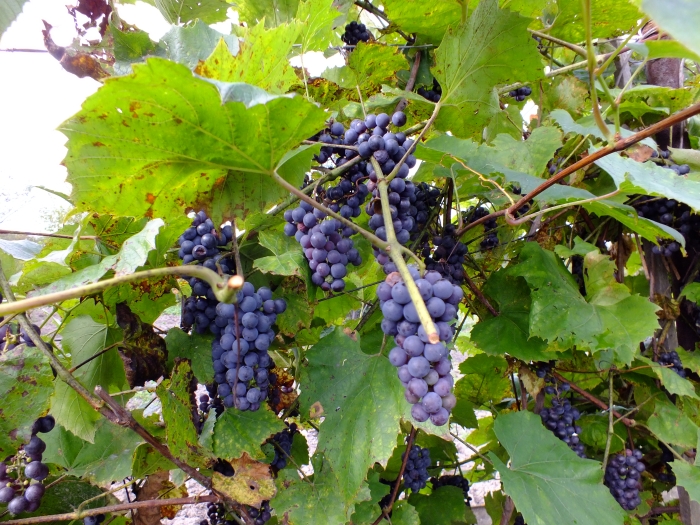Amur Grape
(Vitis amurensis)
Amur Grape (Vitis amurensis)
/
/

Andshel
CC BY-SA 4.0
Image By:
Andshel
Recorded By:
Copyright:
CC BY-SA 4.0
Copyright Notice:
Photo by: Andshel | License Type: CC BY-SA 4.0 | License URL: https://creativecommons.org/licenses/by-sa/4.0 | Uploader: Andshel | Publisher: Wikipedia Commons |































Estimated Native Range
Summary
Vitis amurensis, commonly known as Amur Grape, is a deciduous perennial vine native to the forest edges and mountain slopes of East Asia, including regions in Russia, China, Korea, and Japan. It can climb to heights of 20-30 feet with a spread of about 2 feet, using tendrils to grasp onto structures. The vine is known for its attractive foliage and its ability to cover trellises and walls rapidly. Amur Grape produces small greenish flowers in the spring, which are not particularly showy, but these develop into clusters of dark blue-black grapes by late summer or fall. The fruit is often used in winemaking and as a table grape in its native region.
The Amur Grape vine is valued for its hardiness in cold climates, vibrant fall foliage that turns a striking red color, and its versatility in the landscape. It is used for ornamental purposes, to provide quick cover for fences and arbors, and for fruit production. This vine prefers full sun but can tolerate part shade, and it adapts to a range of soil types, provided they have good drainage. While it has low water requirements, adequate moisture is necessary for optimal fruit production. Gardeners should be aware that this species can become invasive outside its native range and may require pruning to keep it under control. It is also susceptible to common grape diseases such as powdery mildew and downy mildew, which can be managed with proper care and preventive measures.CC BY-SA 4.0
The Amur Grape vine is valued for its hardiness in cold climates, vibrant fall foliage that turns a striking red color, and its versatility in the landscape. It is used for ornamental purposes, to provide quick cover for fences and arbors, and for fruit production. This vine prefers full sun but can tolerate part shade, and it adapts to a range of soil types, provided they have good drainage. While it has low water requirements, adequate moisture is necessary for optimal fruit production. Gardeners should be aware that this species can become invasive outside its native range and may require pruning to keep it under control. It is also susceptible to common grape diseases such as powdery mildew and downy mildew, which can be managed with proper care and preventive measures.CC BY-SA 4.0
Plant Description
- Plant Type: Vine
- Height: 20-30 feet
- Width: 1-2 feet
- Growth Rate: Moderate
- Flower Color: N/A
- Flowering Season: Spring, Summer
- Leaf Retention: Deciduous
Growth Requirements
- Sun: Full Sun
- Water: Medium
- Drainage: Slow, Medium, Fast
Common Uses
Bee Garden, Bird Garden, Butterfly Garden, Edible*Disclaimer: Easyscape's listed plant edibility is for informational use. Always verify the safety and proper identification of any plant before consumption., Low Maintenance, Rabbit Resistant
Natural Habitat
Forest edges and mountain slopes of East Asia
Other Names
Common Names: Amurrebe, Amurvin, Amur River Grape, 왕머루, Shan Pu Tao
Scientific Names: , Vitis amurensis, Vitis amurensis var. shiragae, Vitis amurensis var. amurensis, Vitis vinifera var. amurensis, Vitis flexuosa var. choii, Vitis amurensis f. hermaphrodita, Vitis choii, Vitis shiragae, Vitis vulpina var. amurensis,
GBIF Accepted Name: Vitis amurensis Rupr.